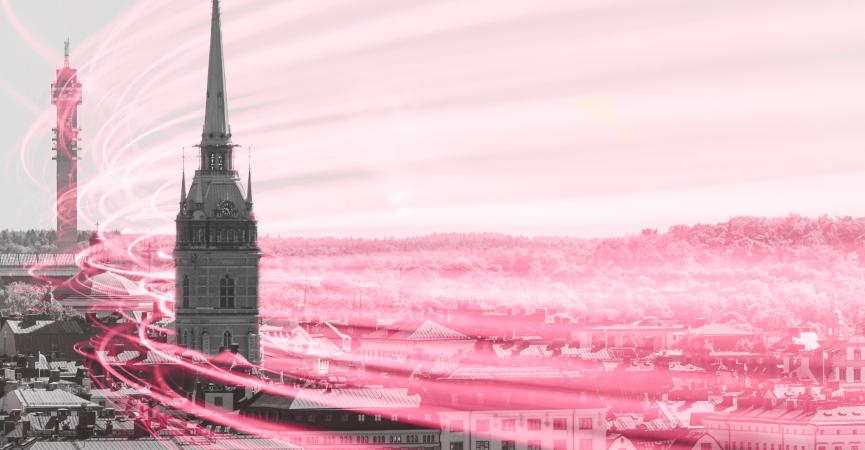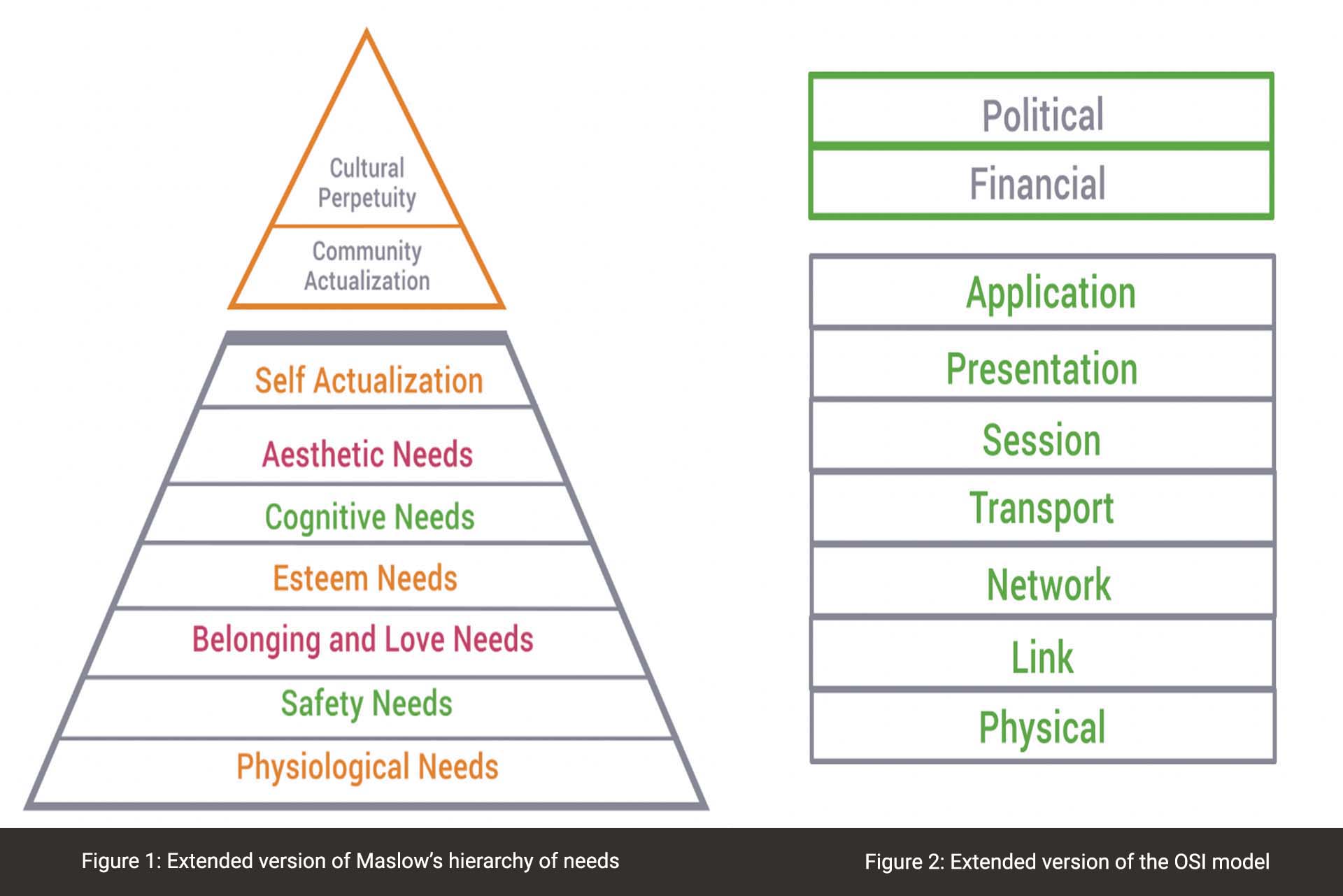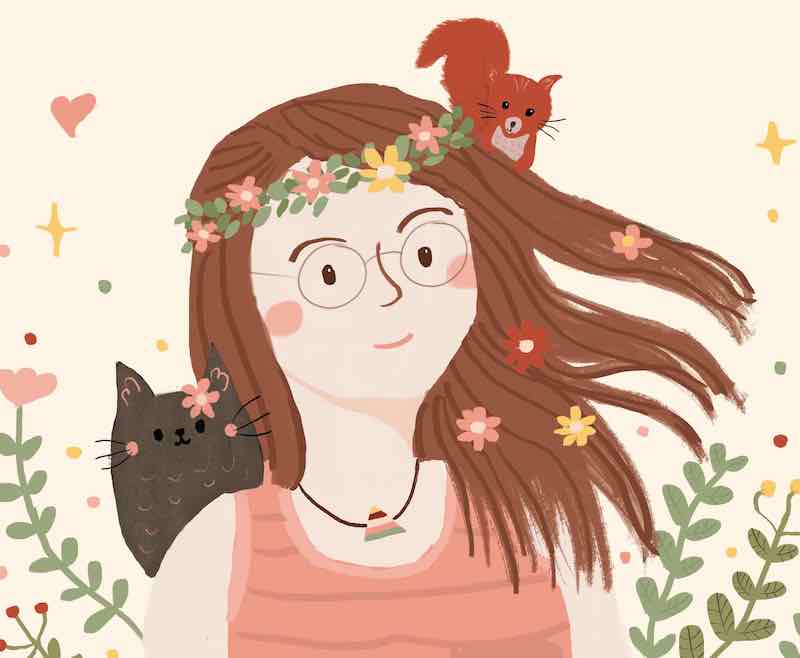
Technical communities’ resilience during the COVID-19 pandemic
Introduction
In March 2020, when the WHO announced the COVID-19 pandemic, I didn’t think that I would still have to worry about it almost two years later. Yet, here we are.
As a Community Builder at the RIPE NCC, I was struggling to keep “building” the community when the most useful “tools” for my work were taken away from me: face-to-face contacts and hackathons. Conferences, large and small, were cancelled, impossible and forbidden. At the same time, keeping the Internet running - the main job of the RIPE Community participants - has become more important than ever, since a lot of human interactions, jobs and even health-related activities moved online. We knew that we did well, because we measured how the network was performing under the stress of new users and new uses (see more here).
But, how were we coping: we, the networkers? How were we feeling? Anxious or relieved? Burned-out or thriving? Isolated or acknowledged? Scared or supportive? Lonely or rebellious? Exploited or privileged? Grieving or celebrating?
By March 2021, it was important to start talking about these sensitive topics. It was doubly difficult, when the expectation of “professionalism” is to keep the work and personal life separate, and to rely on experts to stick to their narrowly defined fields. Although I am not a medical professional or a social scientist, I do have first hand experience of surviving many traumas, and I am an engineer, so I am able to translate those specific narratives in both directions.
The OSI model and Maslow’s Hierarchy of Needs
I made an analogy between the OSI model (the abstraction layers of networking architecture familiar to most participants in the RIPE and Netnod communities), and Maslow’s pyramid (the classification system of “universal” human motivations).

I used extended versions of both OSI & Maslow’s models, and I took some liberties with interpretation. This gave me a structure to present my exploration into the topic: how did the different technical communities promote wellness during the times of pandemic?
If you’d like to watch me speak about this topic, here are two recent videos:
- September 2021, NLNOG: https://youtu.be/Ycrl7NI8sOY
- November 2021, NLUUG : https://youtu.be/2HstoqAFn9g
Between March and September 2021, I published ten long articles on RIPE Labs exploring the analogy between OSI and Maslow’s hierarchy of needs in more detail. What follows here is a summarised version of this discussion with links to each of the ten articles. If you are interested in any of the sections below, I encourage you to click through to the full article where you will find many useful examples, resources and research papers.
Layer 1: The physical layer/physiological needs
In the OSI Model, the physical layer is a “fundamental layer underlying the higher level functions” that interacts with hardware. This corresponds to the basis of the “pyramid of needs”: physiological needs (human hardware!).
In the full article, I explore how important it is for us to take care of our physical and emotional needs as well as our mental health.
Layer 2: Data link layer / safety needs
In Real Life, A.D. 2020/2021, physical connections between human “hosts” have been cut due to the pandemic as a result of:
- self-isolation, quarantine, “shelter-in-place” measures making it difficult to see the friends and family in the same village / town / city / country
- travel restrictions making it impossible to visit family in distant countries
- bans on large events have caused all in-person interactions at conferences to be cancelled
We could consider video-chats, phone calls and on-line conferences as a kind of “error correction” for the failure of communication via physical contact. And while it's a blessing to be able to stay at least “digitally connected”, it can lead to “Zoom fatigue” RSI (Repetitive Strain Injury), and even eye-sight problems!
Just as the "Data Link Layer" interconnects the physical and network layers, the concept of “safety” is similarly interdependent with physical (safety) needs and the safety that can be felt through belonging: to organisations, communities and families.
In the full article, I further explore how during the pandemic, personal AND community safety have become critical, and I reference many approaches: by academics, human-rights activists, software developers, and journalists.
Layer 3: Network / belonging needs
In the “hourglass” illustration of the Internet Protocol (IP) suite, the IP layer is placed at the “waist”, making it central to all the other layers. In the analogy I've drawn between the OSI Stack and the Maslow motivational system, the third networking layer of the former falls into line with the need for love and belonging of the latter, which also mark the mid-point between the basic needs and higher motivations.
The smallest computer network is a connection between two nodes; in a larger system, all the connected nodes belong to a network: Local, Wide, Metro…
The smallest “human network” is a connection between two people — and that is also the smallest unit of love and belonging; by creating and maintaining additional connections, people belong to groups of people — Local, Wide and Metro :)
Humans form social networks: couples, families, groups of friends, music bands, sport teams, hackerspace membership, community of peers, affiliation groups (workers, professionals, expats, refugees, fans of a celebrity, migrants, believers, citizens…).
However, the “networking” terms have been used and misused a lot, creating paradoxes such as “If everything is a network, nothing is a network”, as Mushon Zer-Aviv presented at re:publica in 2016 (and here’s his essay, too)
To paraphrase social scientist Brené Brown, who could have been talking about peering: Network connectivity is not something that we give or get; it is a connection between two nodes
The original quote is about belonging:
“love is not something that we give or get; it is a connection between two people when it exists within each one of them.” (source: https://www.azquotes.com/quote/1136899)
These concepts are so fundamental and self-explanatory, yet so complex that they are really hard to define properly. That's why both social scientists and computer scientists (and philosophers, and poets) have been researching these topics for a long time.
In the full article, I explore this by looking in detail at empathy, emotional impact and grief.
Layer 4: TCP/UDP and esteem
The most famous practical implementations of the theoretical OSI Layer 4 protocols are TCP (connection-oriented, using “handshake dialogues” such as SYN-ACK) and UDP (based on datagrams, lightweight).
“Due to Coronavirus, all TCP applications are being converted to UDP to avoid Handshakes.”
For me the link between Layer 4 and "esteem" is an ACK, which stands for Acknowledgement. Wikipedia’s article about Maslow’s method describes esteem in two ways, as "the need for respect from others, and the need for self respect”.
If we are lucky, we work in a healthy workplace, get along with our colleagues, give and receive respect, and also have a good balance between work and personal life. If we are unfortunate, one of the consequences can be a burnout: if our need for esteem results in an increasing effort to achieve more and more, taking more responsibilities, worrying about our reputation, searching for acknowledgement.
In the full article, I explore this in more detail by looking at boundaries vs burnout, some tools that can help and what we can learn about personal boundaries from TCP “connection termination”.
Layer 5: Session / cognitive needs
In my metaphorical mapping of the OSI model and the expanded Masow’s hierarchy of needs, Layer 5 corresponds to “cognitive needs”.
“Maslow believed that humans chase knowledge to increase their intelligence, so he added cognitive needs in his hierarchy of needs pyramid that focuses on learning, discovering, and creating a better understanding of the world. The motive behind this need is to learn, explore, and welcome experiences in life; needs for meaning and predictability, knowledge and understanding.”
In the full article, I look in detail at how our community is rich with people belonging to the neurodiversity spectrum and how we can embrace neurodiversity in tech.
Layer 6: Presentation / aesthetic needs
When the basic health and connection needs have been met, people have time and energy to fulfil needs for "self-actualisation". Layer 6 in the "Expanded Maslow's Hierarchy" is “Aesthetic Needs” and here I map that to the Presentation Layer of the OSI Model.
If we consider one literal meaning of “presentation”: appearance, the Aesthetic Needs translate to Beauty. Beauty can be achieved through Art and through Nature:
“ ‘Art,’ in the sense of ‘living well, living with skill, grace, energy’ - like carrying a basket of bread and smelling it and eating as you go. I don't mean only certain special products made by specially gifted people living in specially privileged garrets, studios, and ivory towers - ‘High’ Art; I mean also all the low arts, the ones men don't want. For instance, the art of making order where people live”. (Source: "We Are Volcanoes": Ursula K. Le Guin, Bryn Mawr Commencement Address, 1986)
“A walk in nature, walks the soul back home.” -1870 (Source: Mary Lua Adelia Davis Treat)
In the full article, I discuss in more detail the impact and importance of art, technology, health, nature (and climate) in connection to COVID-19.
Layer 7: Application / self-actualisation
Layer 7 - the application layer - is the last official layer of both the OSI networking model and TCP/IP stack. The seventh layer of the basic Maslow’s pyramid is the need for self-actualisation.
Self-actualisation is both the pinnacle of individual self-development — fulfilling one’s greater purpose — and a basis for being able to contribute to the resilience of communities and societies. In extreme, these two aspects can lead to either self indulgence or self-sacrifice: the challenge is to find the balance between the two.
In the full article, I explore the connection between self-actualisation and Internet applications, how to self-actualise your own web/social media and how privilege works (both in the tech view of levels of access and in the social science concept of a person’s agency, determined by external circumstances, systems of power, group dynamics, personal abilities and preferences.
Extended OSI and Maslow’s hierarchy of needs
The extended versions of the OSI networking model and Maslow’s pyramid have additional layers. In my final articles of the series, I looked at:
- how the need for community actualisation is equivalent to the financial Layer 8 and how the COVID-19 pandemic offers us new models of caring and maintenance as well as alternatives to our current economic and social models (full article)
- how the “political” layer (Layer 9 of the extended OSI) maps onto ideas of cultural perpetuity, the impact of the Coronavirus pandemic on inequalities, justice and digital technologies; how every society has the Internet they deserve; and how examples such as ubuntu provide models of working together to imagine and build the utopian Internet of the future (full article)
Conclusions
The main message from the RIPE Community is YOU ARE NOT ALONE!
We are all in this together! Taking care of your own health improves the resilience of the community; by helping those who are less privileged than yourself you contribute to their and your own co-liberation; by asking for help and by receiving support from others you give them a gift of your needs and your trust: you enable them to “pay it forward”, so that you can go on caring and giving: this is how we form and maintain resilient communities!
Vesna Manojlovic

This is a highly condensed version of the series of ten articles originally published by Vesna on RIPE Labs between March-September 2021.
